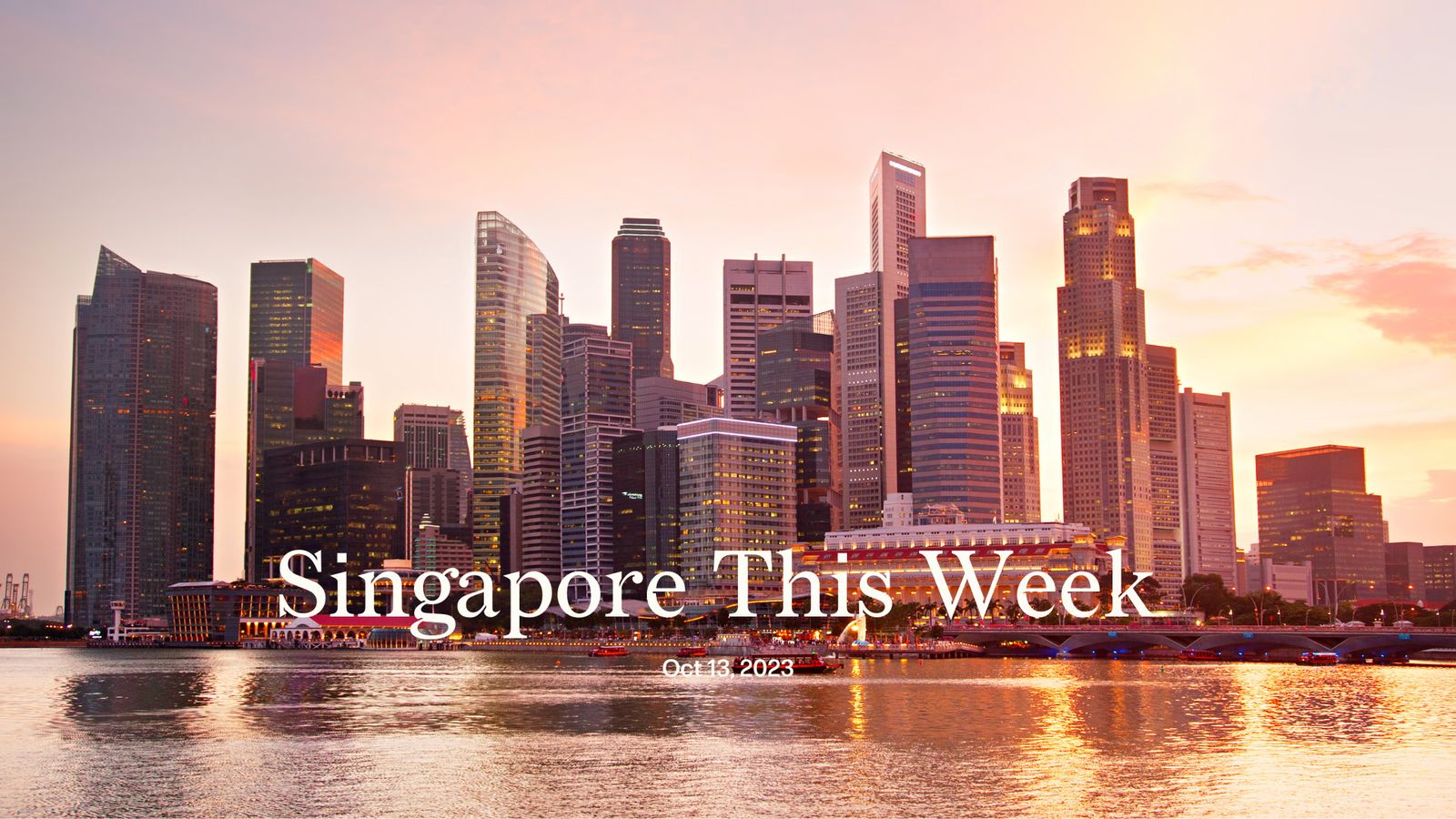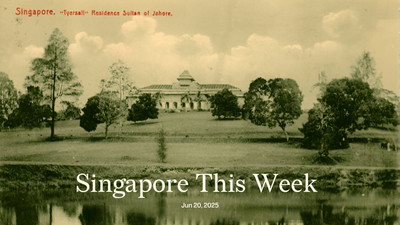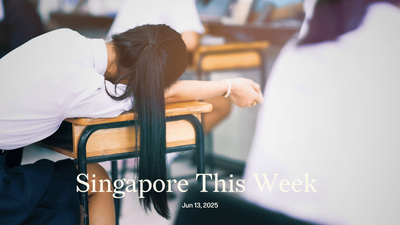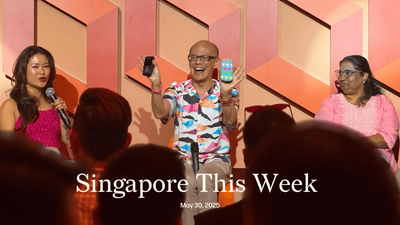Society: Doing good with dirty cash
No, it wasn’t all spent on Rolls Royces, Macallan whisky and Hermès slippers. Three of the 10 members of the so-called “Fujian gang”, who are accused of laundering S$2.8bn through Singapore, donated S$72,450 to the Rainbow Centre, which operates special needs schools. Other charities to have benefited from the group’s largesse include the National Kidney Foundation and Lions Befrienders, which serves the elderly. Charities must file suspicious transaction reports if they suspect a donation is tainted, though one can hardly blame these under-resourced organisations for not being able to sniff out financial crimes that even highly paid bankers might miss. The ethics of fundraising have been in the spotlight in the past decade because of donations to art institutions by the Sackler family, of Oxycontin notoriety, and to universities by Jeffrey Epstein, the late paedophile. Long gone are the days when charities could amorally abide by the supposed code of General Booth, founder of The Salvation Army: “I shall take all the money I can get, and I shall wash it clean with the grateful tears of widows and orphans.” But why are the crooks in Singapore so benevolent? Possibly tax reasons, given Singapore’s generous 250 percent rebates on charitable donations. Though just as likely it’s to improve their standing in the community, and to show that they’re assimilating into Singaporean society, which could boost their chances of citizenship. That’s one reason rich mainlanders have been trying to buy honorary titles in clan associations. In our essay of the week, “Is Singapore being used to finance wars?”, we describe several alleged war financiers, including a Singaporean company housed in the Nanyang Hakka Federation—one that may have helped arm the Russians in their invasion of Ukraine.
Society: Journalistic integrity hits a new Lui
Singaporean new media outlets have long flirted with their readers’ trust when it comes to their disclosures of paid content. Readers often have to scroll to the end of a long web article and look at the fine print, or read through an Instagram post’s caption—as opposed to a clear “Paid partnership” label—to realise that they’ve just read not original, independent work but sponsored content. It’s almost as if the disclosure is an afterthought, a get-out-of-jail card should anybody question them, as opposed to an upfront and transparent declaration to their readers. The outlets are often forced into this corner by a combination of their advertising-dependent business models and the fact that advertisers here, including the government, wield so much power. Advertisers don’t want you, the reader, to realise that a third party, and not the publication itself, is influencing the content to try to sell you something—propaganda, in the case of governments. These practices would not pass muster in leading international publications, but are accepted by many editors here as the natural state of affairs. Cari makan, lah. Yet even by these lowly standards, last week’s revelations about sethlui.com, a popular food blog, shocked many. A writer there e-mailed Charlene Yan, the owner of an eatery in Everton Park, to offer her a random spot on a listicle of best places to eat in the area for S$2,300. For an additional S$400-600, Yan could get her chosen position on the list for at least a year. In exchange, sethlui.com would review Yan’s eatery in about 150 to 200 words, along with a maximum of two photos, and social media promotion. The blog would also, astonishingly, offer Yan herself two rounds of revisions of the review—of her own joint. In “Addressing the drama – does every media publication have to go through this?”, Lui played the hapless victim: “...we also need to balance our execution with sales opportunities in this competitive market.” Daniel Yap, formerly of The Middle Ground, and Terence Lee, editor-in-chief of Tech in Asia, wrote notable objections. Hopefully this is the wake-up call the industry needs to stem these corrosive habits. But if Lui wants to double down and get really rich, he should run a political blog, and publish a Top 10 Singaporean politicians listicle. Those spots would fetch far higher prices.
Society: No more sponging off mum and dad
If you’re looking to save on rent and utilities by living with your parents for as long as possible, think again. It’s no longer such an absurd idea to charge employed off-spring for the privilege of keeping a roof over their heads. The practice, while fairly uncommon in Singapore, received public attention after Teo Ser Luck, a former member of Parliament, shared on Facebook that he planned to make his eldest son pay to live with the family when he started work. One of the reasons for doing so, Teo told The Straits Times, was to teach his children financial independence. Others have called it a kind of “forced savings” that would eventually be returned to the child—not unlike a certain “fund” that Singaporeans have to contribute to. The question is: how much to charge? Researchers in the UK calculated that young adults save about £8,000 (S$13,423) a year by living at home and worked out that they should pay at least £100 (S$168) a month to their parents, to cover costs like food and electricity. One father here started collecting S$200 a month from his daughter when she was still in school and working part-time. He explained that even though it’s not a norm in Asian culture, it was a “necessary step” to prepare his children for “the high cost of living in the real world.” Now at 26, her rent has increased to S$1,000. It used to be that most kids in Singapore would typically live in their childhood home until they were married, or much older and financially secure. Times have changed. Those against the concept question why parents who don’t need the extra income aren’t helping their children out instead. After all, even with free room and board, many seem on their way out: millennials and Gen Zs have often expressed their desire for greater independence and a place of their own. If you’re going to have to live under your parents’ rules as a tenant, the alternative promise of complete freedom might be worth the hefty price.
Society: Funemployment
Gen Zs are putting the fun in unemployment, according to career service experts who have observed a rise in early career breaks among those born between 1997 and 2012. These breaks can last anywhere from a month to a year, although it’s too early for this trend to be reflected in official figures. Reevaluating career goals, reflecting on the role of work in their lives, and avoiding burnout are some reasons why young Singaporeans are taking long stretches of time off between jobs, even if they don’t have another one lined up. Older generations may baulk at this but it seems like young professionals today have a different relationship with work, possibly due to retrenchments during the pandemic, according to John Shepherd Lim, chief well-being officer of the Singapore Counselling Centre: “[It] shifted the way young professionals view their relationships with their employers—where the traditional notion of loyalty to a workplace has been eroded, and replaced with one where employees prioritise flexibility, autonomy and career alignment…” ‘Funemployment’ first gained momentum in the US, where joblessness among young people is viewed less as a personal failure, and more of an intentional choice to resist hyper-capitalist, exploitative work cultures. Of course, taking a long career break isn’t a choice available to everyone, especially those who have heavier financial burdens. To make their time off more financially sustainable, some Gen Zs are creating and monetising online content from their “funemployment diaries” and others are taking various upskilling courses. But funemployment isn’t a purely hedonistic dream. The funemployed have to grapple with the anxiety that they might be falling behind their peers, or that future employers might see the break on their CV and label them “lazy” or “unmotivated”. Hence, some have set hard deadlines for their funemployment phase, which means they’ll eventually rejoin the rest of us in this rat race.
Editor’s note: Allowing one of Jom’s Gen Zs to write the above is about as much “funemployment” as we’ll permit.
Society: More awareness, but mental well-being still poor
One in four people under 35 in Singapore have “seriously considered” self-harm or suicide at least once in the past year. That’s according to the World Mental Health Day 2023 Report by market research firm Ipsos. It surveyed 1,000 Singaporeans aged 21 to 74 online—part of a broader study of 23,000 adults in 31 countries—and found that 78 percent thought that their mental health was as important as their physical health. Slightly more than half (52 percent) said they think about their mental well-being often, while 44 percent not very much or never—quite a considerable segment, said an Ipsos spokesperson. This might be due to the “high-stress, relentless rhythm of life” here, she added. In the last 12 months, some 55 percent have felt stressed to the point where it had an impact on how they lived their daily life, and they couldn’t cope/deal with things. While almost half (49 percent) said they felt depressed to the point that they felt sad or hopeless almost every day for a couple of weeks or more. The findings are “extremely worrying” but “not totally surprising”, particularly for young adults, said Dr Timothy Singham, a clinical psychologist at Viriya Community Services. There’s been “a sharp rise” in demand for mental health services across all age groups, he explained. Encouragingly, in terms of how Singapore’s healthcare system treated mental and physical health, 54 percent said it did so equally—up from 43 percent in 2021 and higher than the global average of 34 percent. Ahead of World Mental Health Day on the 10th, the government launched the National Mental Health and Well-being Strategy. It aims to strengthen the country’s mental health ecosystem: by increasing the accessibility to clinical care; enhancing capabilities of service providers for early intervention and identification; and improving workplace mental health and well-being. One of the initiatives is a specialised care facility to support youth at risk of suicide, who can seek refuge in a safe environment for up to six months.
History weekly by Faris Joraimi
The Palestinian struggle makes uncomfortable demands on us to clarify our ethical commitments: it has much in common with historical movements for freedom and justice, except that it’s unfolding now, rather than in the past. Last week’s Hamas-led invasion of Israeli towns encircling Gaza marked the first time Palestinian forces successfully crossed into the original 1948 borders, and which seems to have caught the Israeli military off-guard, in probably the deadliest Israeli intelligence disaster since the 1973 Yom Kippur war. Hamas’s original charter of 1988 called for the destruction of Israel. (It seems to have flip-flopped on this agenda since.) Many Western countries have labelled it a terrorist organisation, though many Palestinians consider it both their most efficient governing authority and their most valiant freedom fighter. For 75 years, Palestinians have had to endure the everyday violence of apartheid, land seizure, home demolitions, killings, movement controls, surveillance and daily humiliation inflicted upon them by Israel, backed by the US and in violation of international law. Commentators will endlessly debate the legitimacy of “violence”, but there are no good options for a people enduring such a powerful system of domination. To be sure, the killing of civilians by either side must never be condoned. It’s not clear how the Hamas attack will further the long-term goals of Palestinian liberation, yet given Israel’s extensive blockade of Gaza since Hamas took control of it—likened to an open-air prison—an explosive reaction like this was always a possible scenario. The loss of innocent Jewish lives will now be followed by the loss of innocent Palestinian ones. It’s tempting to ignore such a difficult, faraway situation, but how are we not already implicated, given Singapore’s military-industrial partnerships with the Zionist state? Objection to Israel has been couched in antisemitic rhetoric (by Mahathir, among others), but there has been reckoning of the racist and colonial underpinnings of Zionism itself, including by Jewish individuals and groups. Historians—both Jewish and otherwise—have reassessed widespread views about the conflict as an equal-sided one. When I was a teenager, it was mostly Muslim Singaporeans who had any sympathy for the Palestinian cause, which was often read as a “religious” conflict. I won’t forget how my JC history teacher reminded a rather conservative, pro-Israel, Christian Chinese classmate that Israel discriminates against Christian Palestinians too. (One notable Christian Chinese Singaporean activist of the Palestinian cause is Dr Ang Swee Chai.) These days it’s more common to see young Singaporeans across racial and religious backgrounds unlearning years of pro-Israel state propaganda. (Last year, Jom wrote about the roots of our countries’ relationship.) So I have seen change in my own, brief lifetime. The government’s recent statement warns against any local prejudice and extremism towards any group, including Jews and Muslims. Yet the best way to promote trust between groups is through a better understanding of our history, including greater transparency around Singapore’s relationship with Israel (and other states). Many Singaporeans want a bigger say in how our country engages with the rest of the world. Consistency in our principles, after all, is increasingly at stake: should Singapore continue to stand by an entity that has repeatedly flouted the rules of the international system, which supposedly guarantees our security as well?
Arts: Sing-A-Poor
Canadian rapper Drake has released a new album, “For All The Dogs”, that has sparked discussion locally because of a singular mention of Singapore. In the fourth verse of “Drew A Picasso”, which explores a broken relationship, Drake sings/raps “Artists hittin’ on you, broke as fuck, I swear them niggas probably live in Singapore.” This line has left listeners wondering who Drake is calling out here—his former lover’s suitors, artists in Singapore, or everybody in Singapore. One reading is that Singapore happens to rhyme with “war” and “score”, words that end the preceding and next line in the verse. Another gives credit to Drake for an attempt at wordplay—broke artists and bad singers are “Sing-A-Poor”. Others wonder, as Singaporeans are wont to, what the government thinks about all this, dropping words like “ban” and “POFMA” in their comments. The fact that this line has stirred up so much sentiment is testament not to Drake’s lyrical genius, but to the realities of living in Singapore. One of the world’s wealthiest and most expensive cities is also grossly unequal, meaning that many lower- and middle-income residents struggle to get by. On X (previously Twitter), people ask each other to “tell Drake we’re 5th in gdp per capita (Canada is 18th).” In a Reddit discussion thread, they commiserate: “if they broke af, i double they living in singapore. i live there and i can tell you its not cheap”; and “he’s right, I’m so fucking poor.”
Editor’s note: Though Jom has published an Indian ethnic slur before, relevant in the context of a police officer’s death, this is the first time we’re writing out a common African American one. We’d never allow the gratuitous republishing of slurs, and this is not a decision taken lightly. Read this week’s newsletter for more.
Arts: Singapore sounds
This year’s Baybeats might be over, but you still have opportunities to discover and support local music. For fans of the spooky season, the Singapore Symphony Orchestra (SSO) is presenting “A Haunted Halloween Hymn” on October 28th-29th. Tickets are available for purchase via SSO’s website. At the Esplanade Concourse, you will find artists such as RHAUN, Midnight Blu, Jason Yu, ryoko, Retrofocus, kotoji and Umar Sirhan taking the stage across the month of October. Performances are free. If you enjoy listening to music in your own time and space, consider: The Great Spy Experiment (back after an eight-year hiatus), Linying, Shye, Kin Leonn (who did the soundtrack for “The Breaking Ice”) and Club Mild.
Tech: Red dot in the Big Apple
Lawrence Wong, deputy prime minister and presumed next leader of the ruling People’s Action Party (PAP), last week launched an Enterprise Singapore (EnterpriseSG) Global Innovation Alliance (GIA) node in New York City (NYC), the second in the US after San Francisco. This move helps bridge Singapore’s start-ups with the vibrant US tech ecosystem, providing necessary resources to aggressively scale and expand their global footprint. NYC is home to over 25,000 tech start-ups valued at nearly US$147bn (S$201bn). Afterall, Singapore’s home market is fairly small and can limit the growth opportunities of fast-growing technology start-ups. Some notable Singapore-based start-ups that have entered the US market include Biofourmis, a biotech unicorn, and Zopim, a live chat widget, which was eventually acquired by Zendesk. Partnering with WEVE Acceleration, EnterpriseSG will run a 10-week acceleration programme that includes one-on-one mentorships, group coaching, and a two-week, in-market immersion segment. This structure aims to empower Singapore’s start-ups with robust insights into business regulations and cultures in the US, and equip them with go-to-market strategies tailored to the American context. The GIA node’s establishment in NYC underscores EnterpriseSG’s larger strategy to connect its start-ups to key innovation hubs around the world (the GIA network now covers 18 cities). To date, EnterpriseSG has helped over 500 local enterprises expand abroad.
Tech: Less e-waste and more accessible electronics
Not everybody wants the latest iPhone. Some are content with older models, even if they’ve had multiple previous owners. Separately, some buyers of other electronic goods, such as GoPro cameras, might want them only for a specific trip or period. Yes, the trading of used electronic equipment happens informally on e-commerce sites such as Carousell. But what if our entire relationship with gadgets was fundamentally transformed from ownership to renting? That’s the philosophy behind electronics subscription services such as Grover, which has been highly successful in Europe. They’re part of broader circular economy efforts, which among other things aim to extend product life cycles in the interest of resource conservation and sustainability. The business model is taking off in Asia. Circular, an electronics subscription service, has raised US$7.6m (S$10.4m) in seed funding. In addition to offering new devices, the Y-Combinator backed start-up also provides refurbished options, thereby reducing electronic waste and resource consumption. In 2019, Asia contributed close to 50 percent of the 53.6m-metric-tonne global e-waste problem. Considerable challenges lie ahead in altering the strong cultural preference towards device ownership and breaking the perceived status associated with it. Moreover, competing with existing financial products and overcoming consumer financial behaviour could be tough obstacles. However, Circular’s customisable subscription plans offer flexibility that may attract customers seeking affordability and convenience. For instance, you could rent the latest iPhone 15 Plus for S$64 per month on Circular’s website, instead of paying S$1,299 for a new one. Circular’s service reflects services that meet emerging consumer trends in sustainability, while demonstrating clear financial incentives for end customers to adopt them. So don’t buy your partner an Apple Watch; rent them one.
If you enjoy Jom’s work, do get a paid subscription today to support independent journalism in Singapore.








